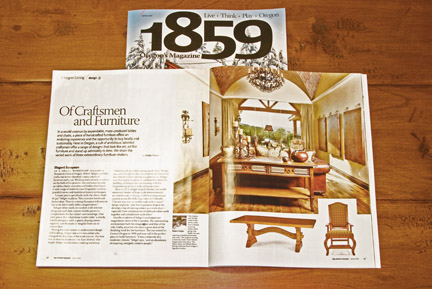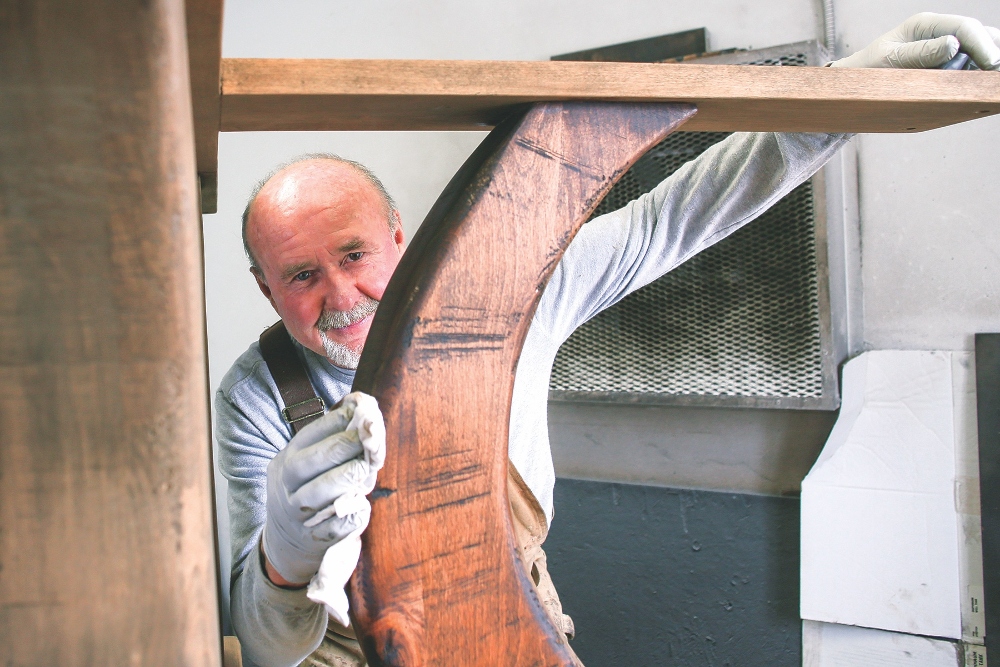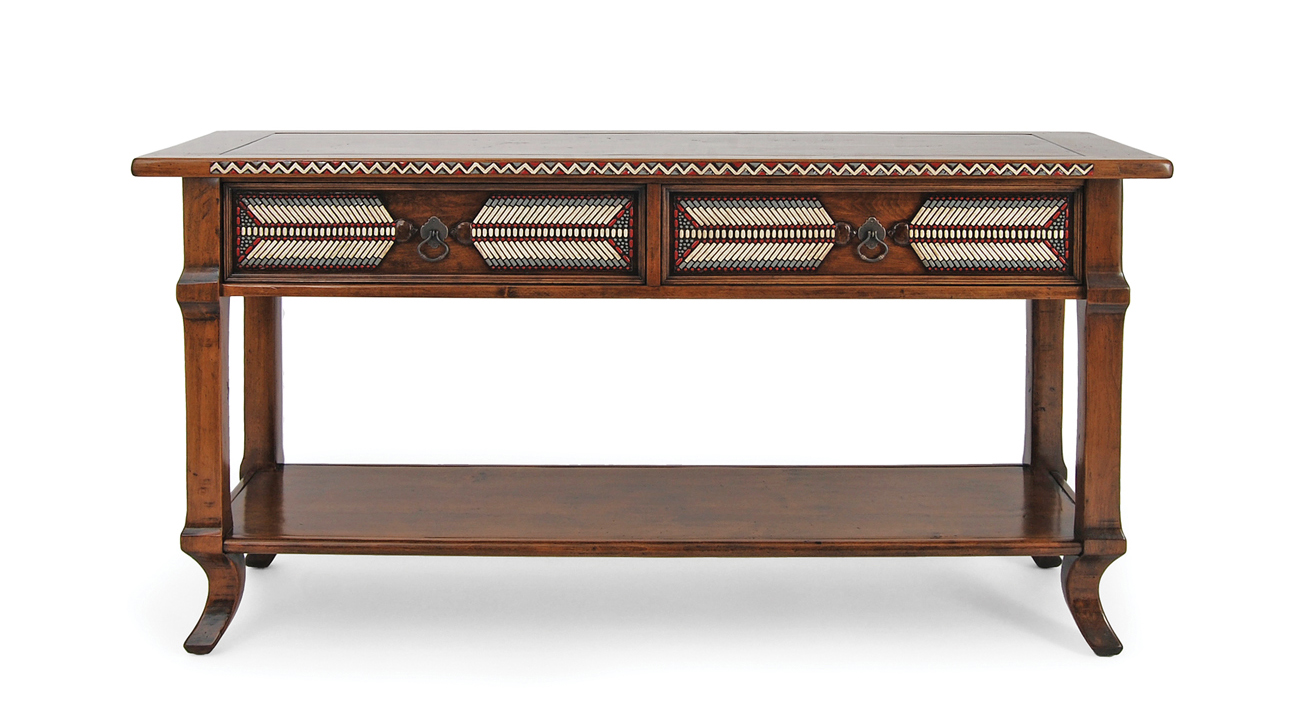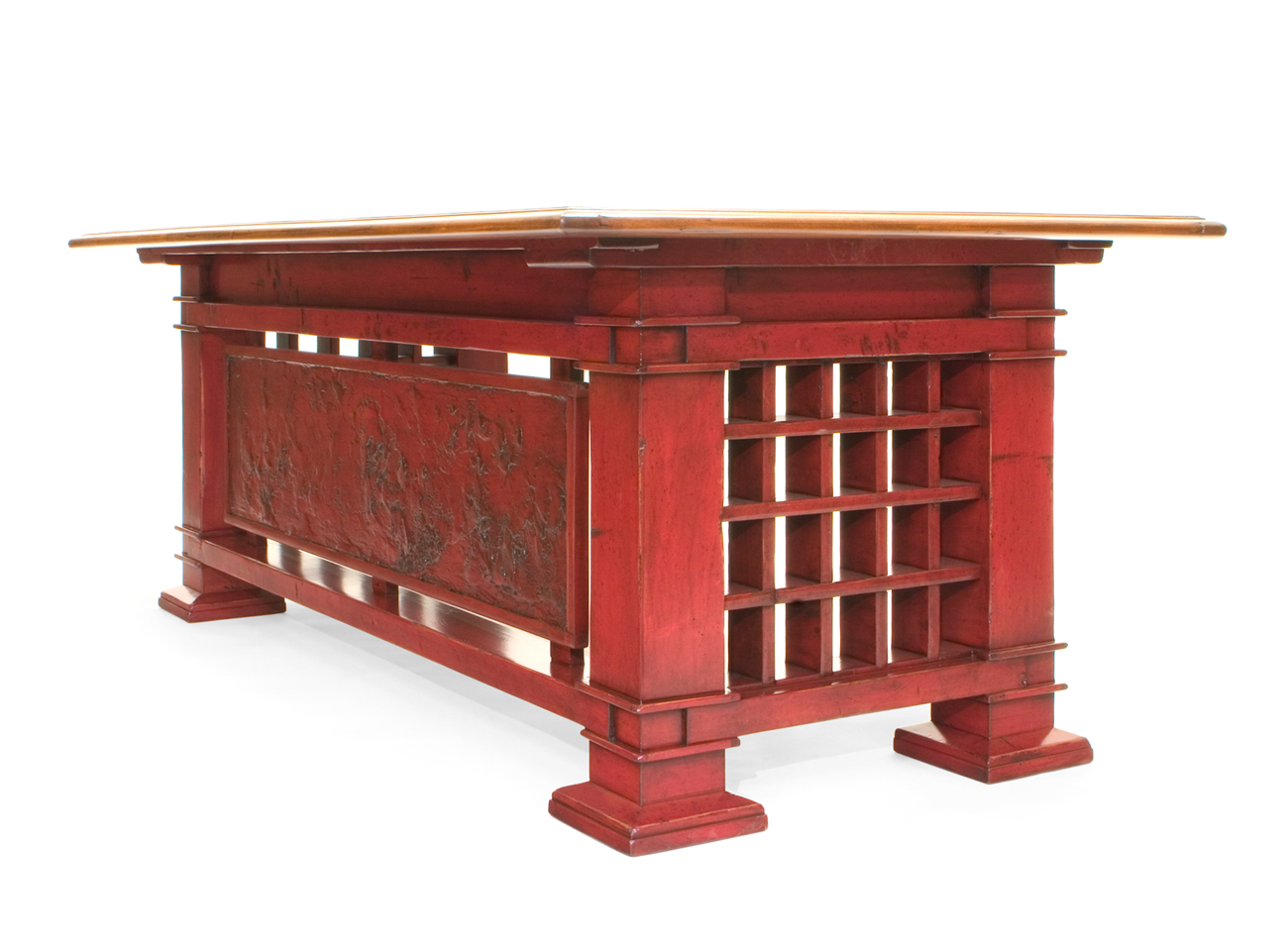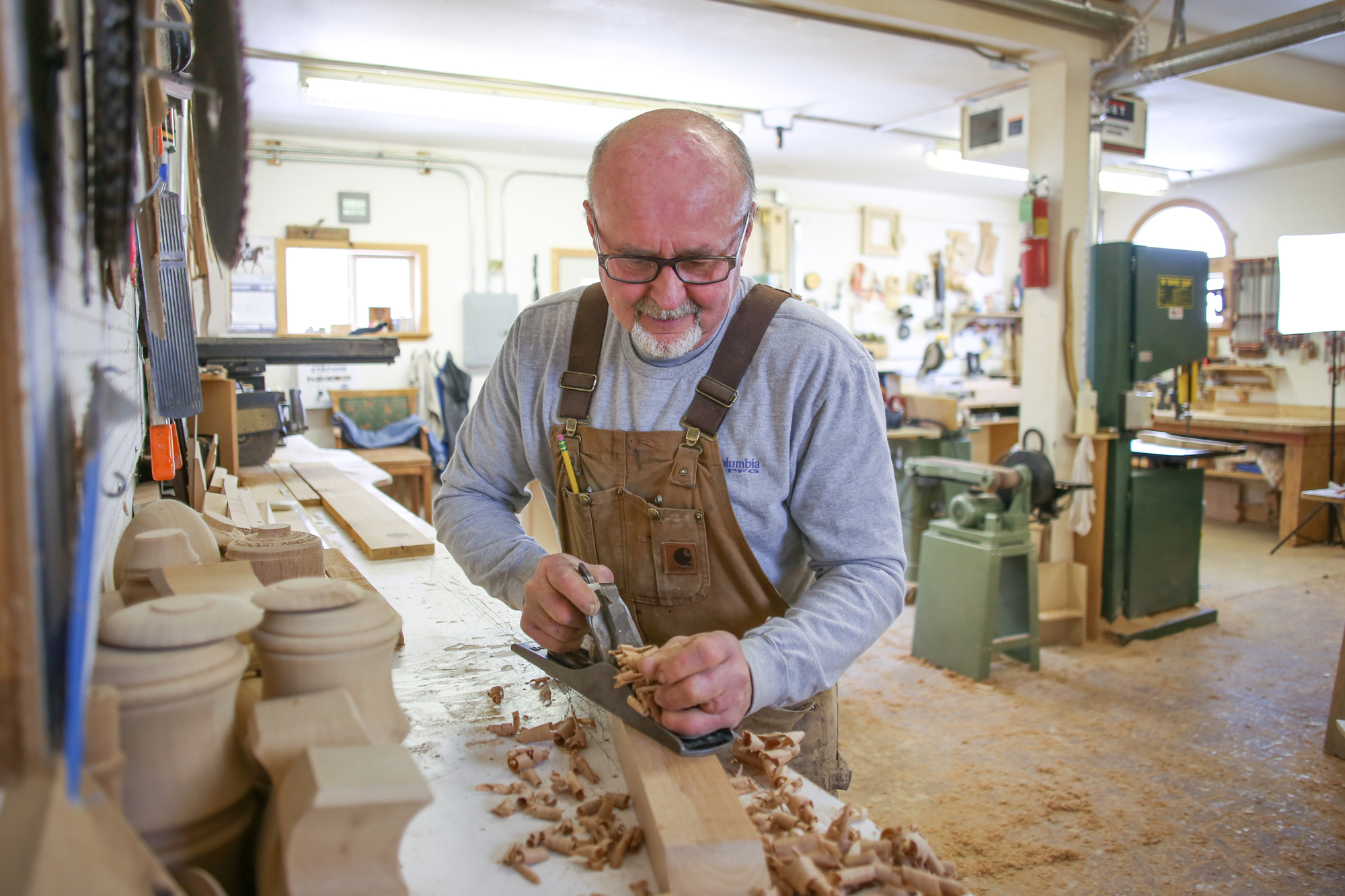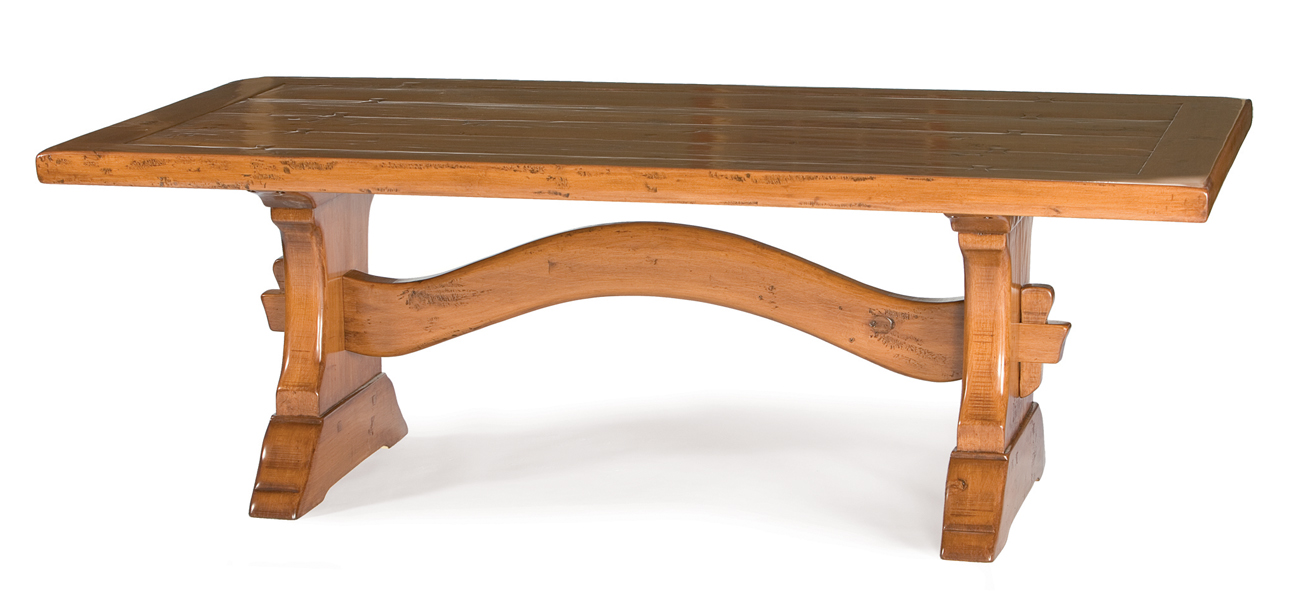
1859 Magazine, Jan 2011
Of Craftsmen and Furniture
by Addie Hahn
1859 Magazine
In a world overrun by expendable, mass-produced tables and chairs, a piece of hand-crafted furniture offers an enduring experience and the opportunity to buy locally and sustainably. Here in Oregon, a cult of ambitious, talented craftsmen offer a range of designs that look like art, act like furniture, and stand up admirably to time.
In a small workshop on a ranch in Tumalo in Central Oregon, Robert Seliger carefully crafts one to two hundred custom pieces of furniture each year. Working without nails or screws on the bulk of his projects, the craftsman dreams up tables, chairs, armoires and buffets that honor a wide range of aesthetics and frequently combine graceful curves and traditional joinery techniques.
“I create pieces specifically to fit the client’s body shape,” Seliger explains, “like a custom handmade Italian shoe. There is a strong European influence in my work, but it really defies categorization.”
Seliger often works in tandem with interior designers and then custom-builds pieces to complement the furniture’s surroundings. One such piece, his whalebone trestle table, a sturdy, handsome piece with a gently sloping center support, can be made in lengths from six to sixteen feet.
During his early career in architectural design and building, Seliger met with two artists who changed the direction of his work forever. The first was American furniture icon Sam Moloof, who taught Seliger in a furniture-making workshop. “Maloof really instilled a strong work ethic,” Seliger says, and though he also removed any preconceived idea that furniture-making was glamorous, Seliger was thoroughly inspired to combine the furniture-building techniques he was learning with his longstanding sense of scale and proportion.
Then in 1972, Seliger helped Christo, the world-renowned creator of large-scale environmental art installations, to hang a 1,300 foot-long orange curtain across the Rifle Gap valley in Colorado. “Christo was very accessible early in his career,” Seliger explains, “and that experience helped me develop a way of viewing nature as a work of art—especially how combinations of different colors work together and complement each other.”
Out the windows of Seliger’s workspace are magnificent views of the Cascades. The surrounding environment fuels his imagination and that of his wife, Cathy, an artist who does a great deal of the finishing work for the furniture. The two moved to Central Oregon in 1990 and now call it the perfect place to build furniture. “It has a relatively dry, moderate climate,” Seliger says, “and an abundance of inspiring, energetic creative people.”
Excerpt reprinted with permission.
1859 Magazine


